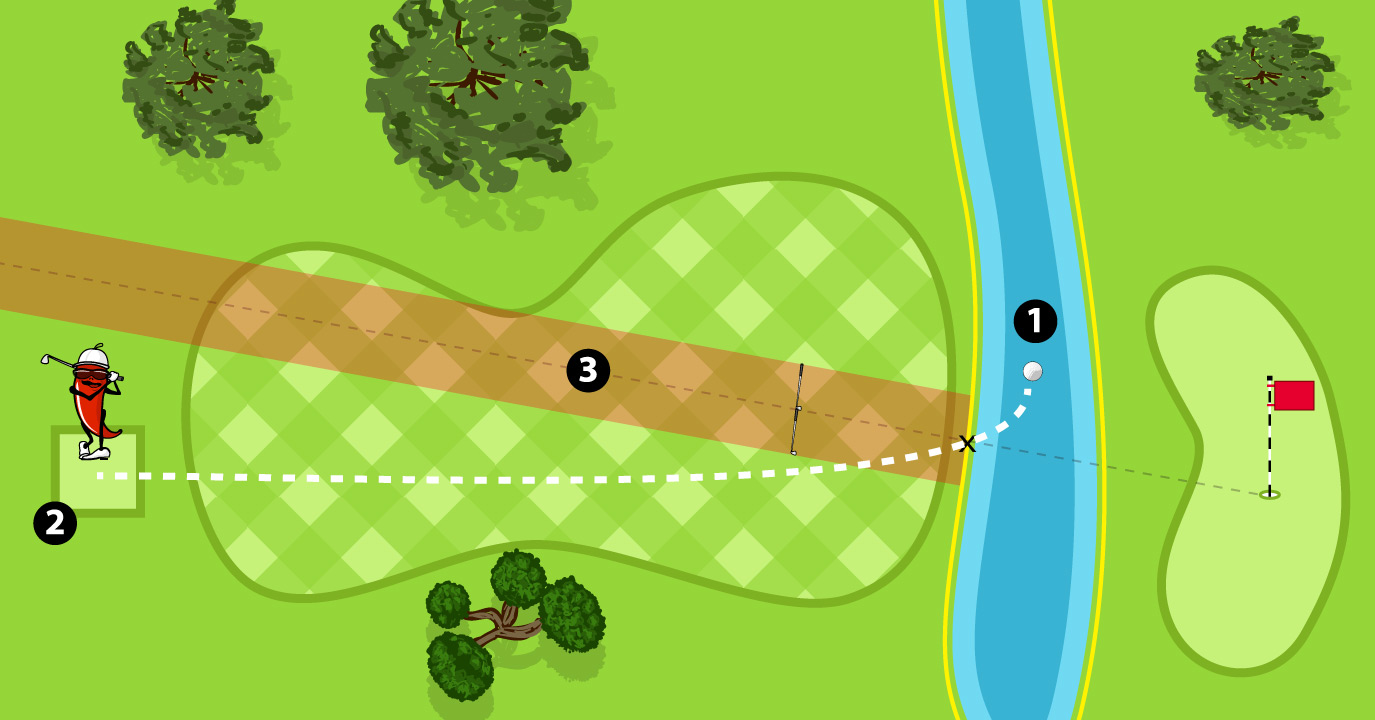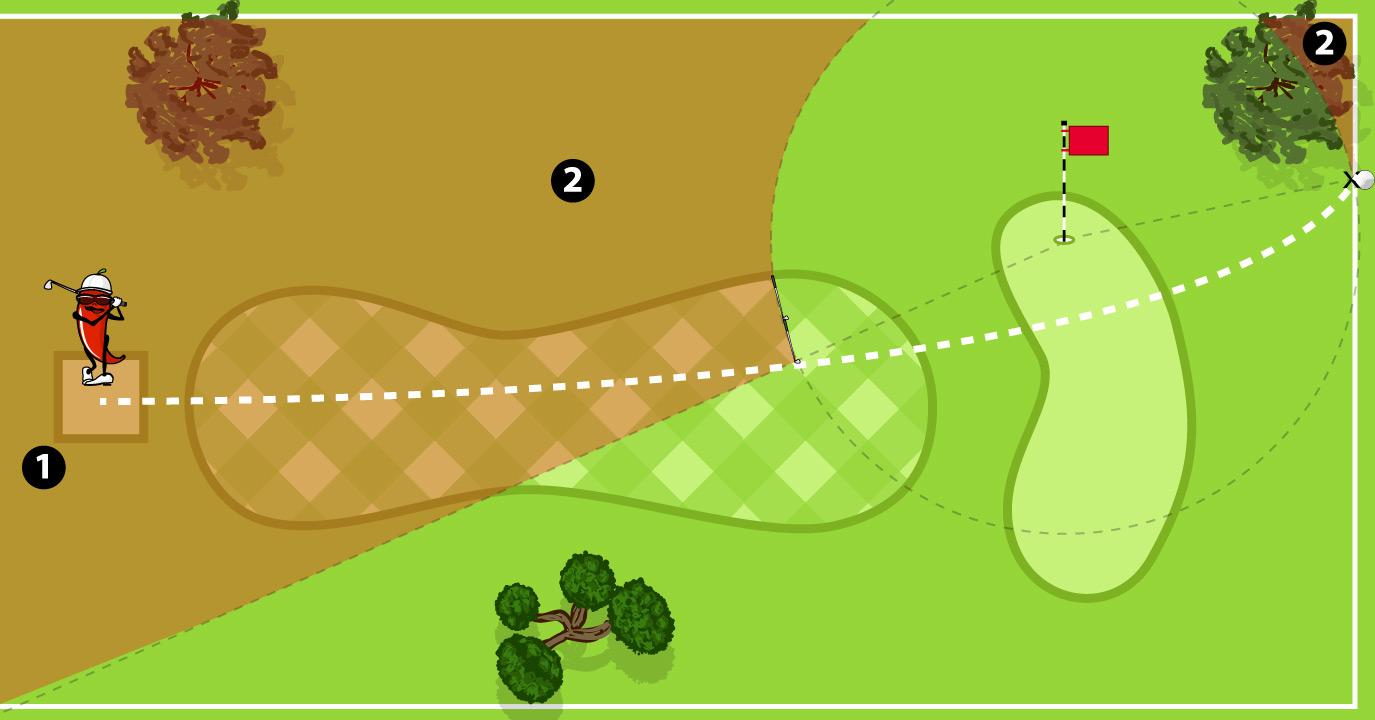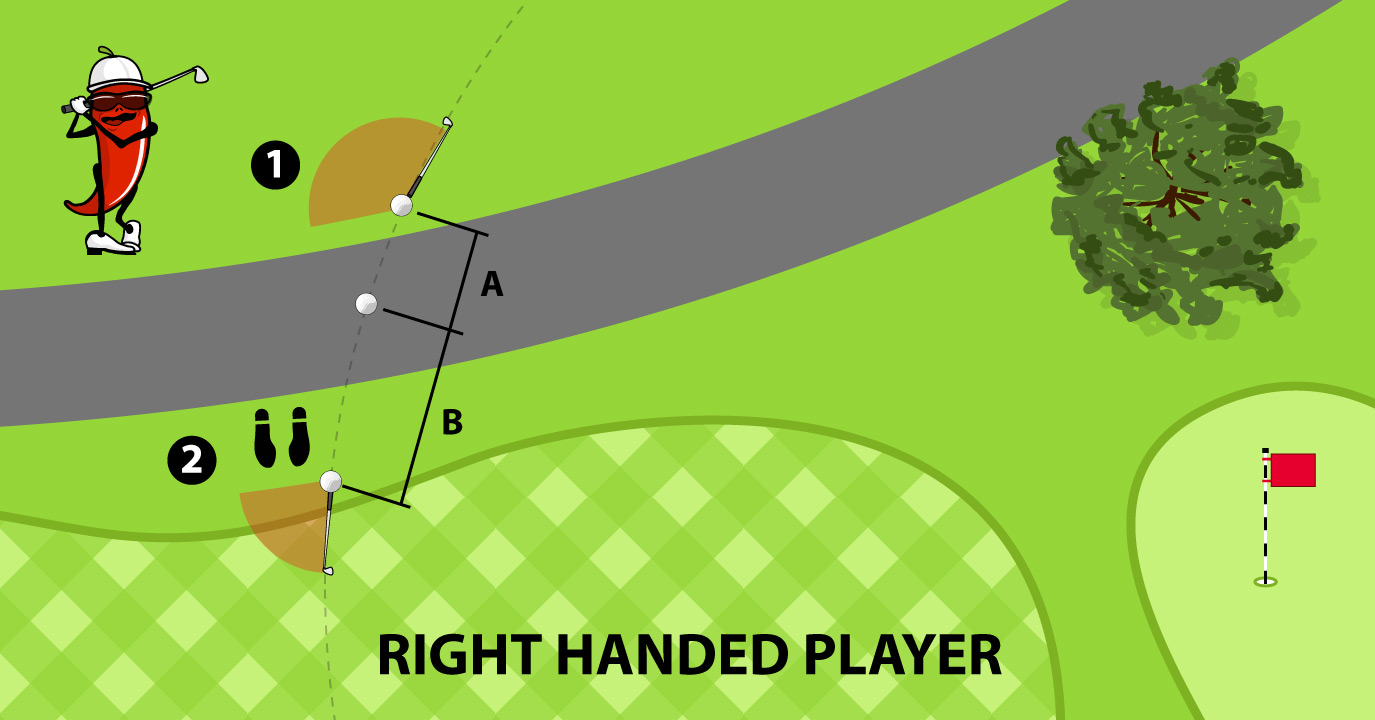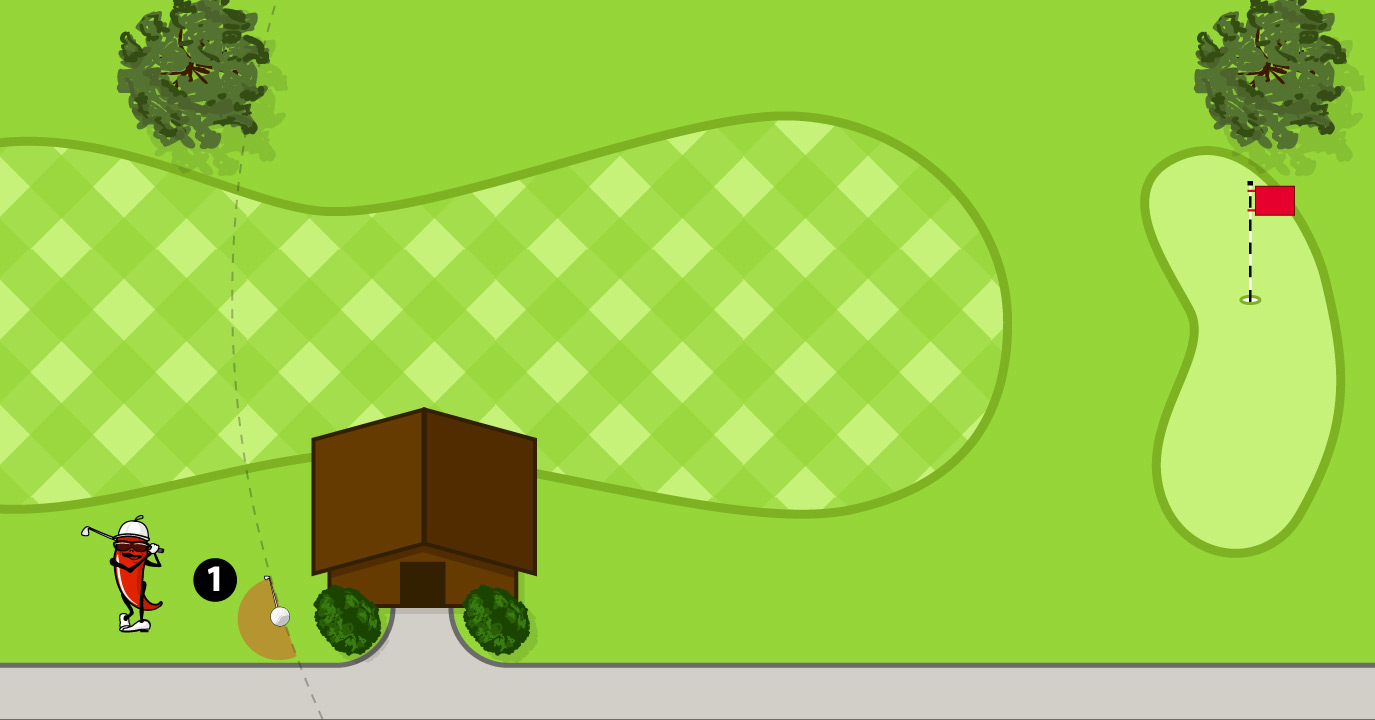When your ball lies in a red designated penalty area (letteral hazard), you can play it as it lies without penalty or you may take relief outside the penalty area for one penalty stroke. Red penalty areas generally tend to run along the sides of the fairway or green. There are essentially 5 options you can take when in a red penalty area.
When playing a shot from a penalty area, you can remove any detached natural or artificial object (known as loose impediments and movable obstructions), ground your club behind the ball, or take practice swings that touch the ground. However, there are a few restrictions. You can’t deem your ball unplayable or take relief from abnormal course conditions (such as a bridge or sprinkler control box). If you need relief, you can play under the penalty area relief options discussed above.
For more details visit the USGA website here.
- Play it as it lies (no penalty)
- Take a drop as close to the point where you took the original shot. You may tee it up if the original shot was taken from the teeing ground.
- Take a drop within 2 club lengths from the point where the ball last crossed the hazard.
- Take a drop anywhere along the direct line of sight from the hole location through the point at which your ball last entered the hazard no closer to the hole. The ball must come to rest within 1 club length of this line.
- You may also take a drop on the opposite side of the hazard withing 2 club lengths of that point.
* There may be an area marked as a designated drop zone. You may drop from there with a 1 stoke penalty.










